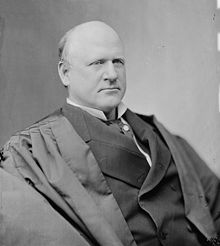 |
| President Roosevelt |
President Roosevelt grew increasingly frustrated throughout the 1930’s as the Supreme Court declared many of Roosevelt’s New Deal programs unconstitutional. Indeed four of the justices on the Supreme Court were such a hindrance to Roosevelt that they became known as the “four horsemen of the apocalypse” due to them striking down many of the Roosevelt’s New Deal laws.
 |
| Roosevelt and his many New Deal programs |
Roosevelt’s solution in 1937 to the problem with the Supreme Court was to stack the court with more justices, effectively nullifying any dissent from the “four horsemen” and to require that justices over the age of 70 retire. Conveniently the requirement for justices over the age of 70 to retire would have forced some of the “four horsemen” to retire.
The plan eventually failed to gain support due to many seeing Roosevelt as trying to exert Executive authority over the Judicial Branch. Another reason the court packing plan failed was because the Supreme Court became more moderate on New Deal programs, as seen in West Coast Hotel v. Parrish, which upheld the legality of minimum wage.
Although I find President Franklin Roosevelt to be one of America’s greatest Presidents I find the actions he took in trying to subvert the authority of the Supreme Court to be unsettling. I understand why Roosevelt found it upsetting that the Supreme Court was overturning many of his New Deal programs, but what he tried to do was still wrong. I find it greatly disturbing that Roosevelt would undermine the system of checks and balances in order to get his way. If Roosevelt succeeded in his court-packing plan the results would have been catastrophic. If Roosevelt succeeded the court could have been rendered impotent due to the Executive branch exerting control over the Judicial branch. Furthermore it would have set a precedent where a President could dismantle the Judicial branch if they disagreed with the courts. This could have had profound implications for the Civil Rights movement if leaders could simply choose to undermine the authority of the courts.
One of the core tenants of the American government is the system of checks and balances, where each branch provides a check on the other in order to prevent a totalitarian government from taking shape. By trying to subvert the system of checks and balances Roosevelt was undermining one of the core tenants of American democracy.















